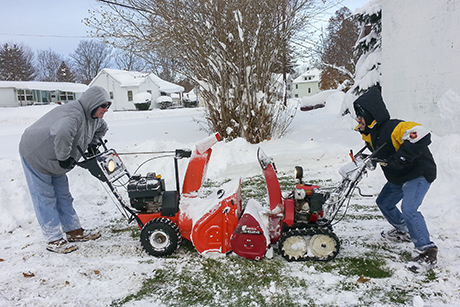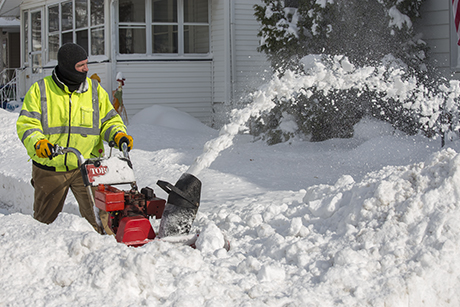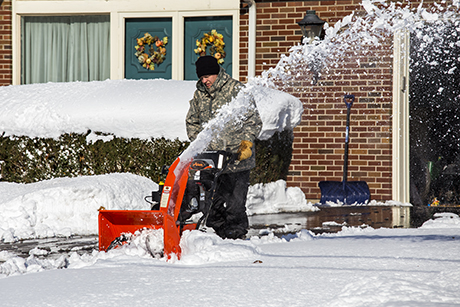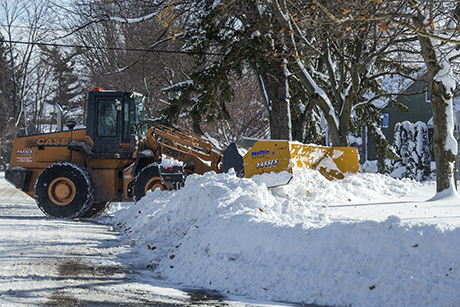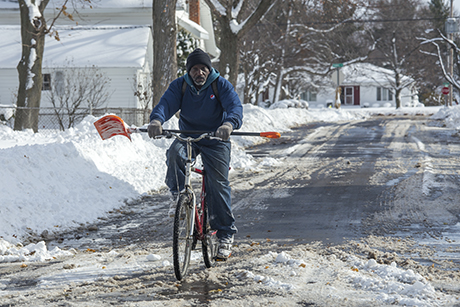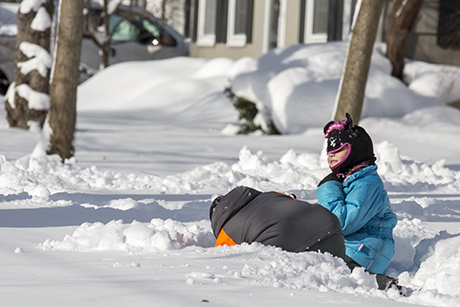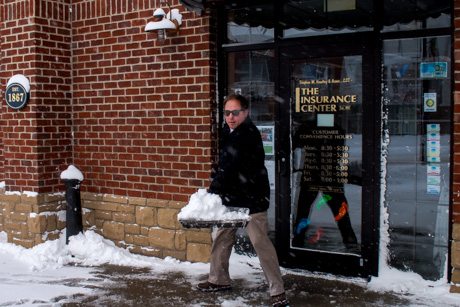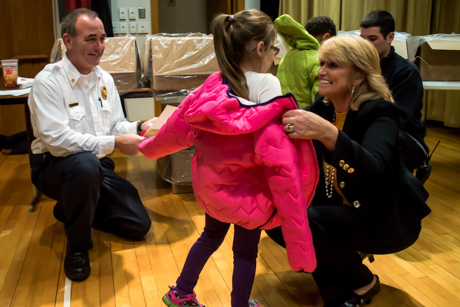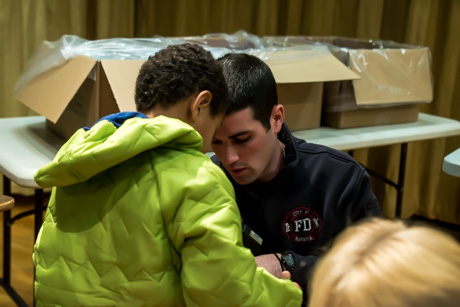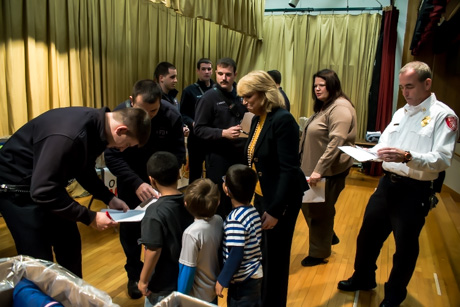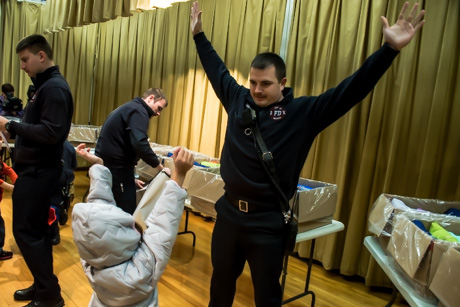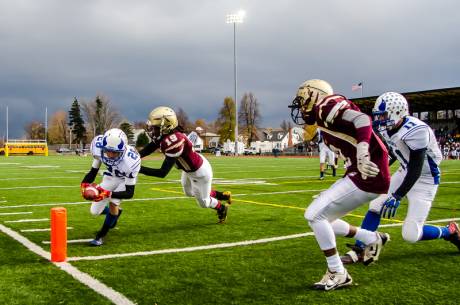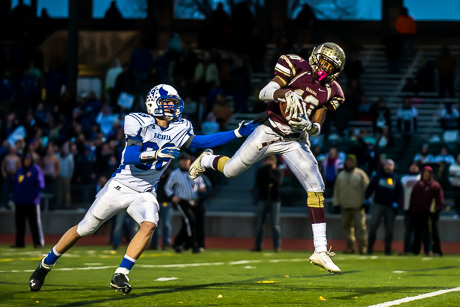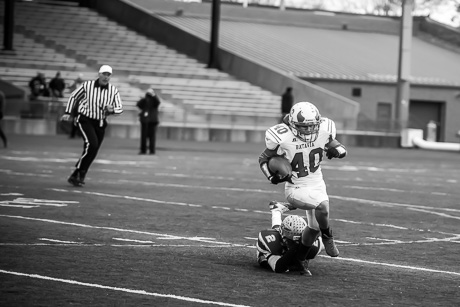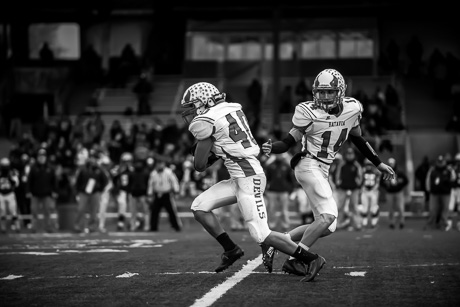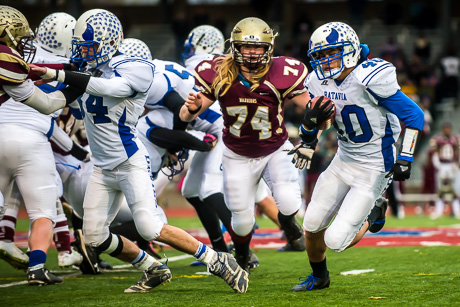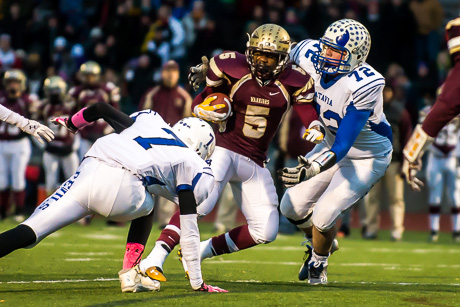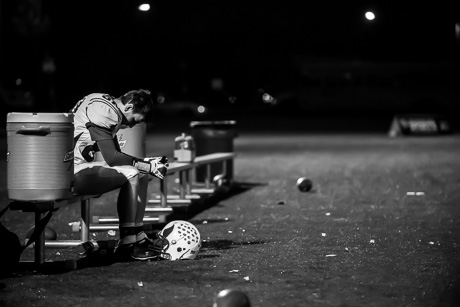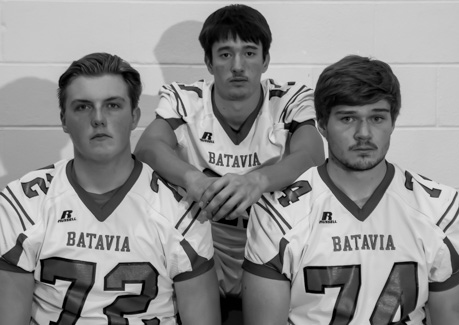Jury finds Dashawn Butler guilty on all three counts
It took a jury only a couple of hours of deliberation to decide that Dashawn Butler is guilty of criminal use of a firearm, 2nd, criminal possession of a weapon, 2nd, and attempted assault, 1st.
Following the verdict, which came at the end of the second day of Butler's trial, Judge Robert C. Noonan ordered Butler held without bail until he's sentenced at 10 a.m., Dec. 22.
He faces up to 15 years in state prison.
Before he was taken to jail, he collected his personal belongings he had with him -- an iPhone, a necklace of beads and a cross and his black-and-white plaid shirt -- and had a deputy hand them over to his girlfriend, who wept while she waited.
The conviction stems from shots fired incident Sept. 27, 2013, at 117 State St., Batavia.
The case was wrapped up with closing arguments just before 2:30 p.m. Noonan spent about an hour reading jury instructions and then sent the jury into a private room for deliberations.
The jury sent out notes twice with questions and then announced it had arrived at a verdict shortly before 5 p.m.
Today's proceedings included testimony from a witness who is a firearms expert and one defense witness, whose testimony was meant to suggest that Butler's intended victim, Kelly Rhim, came to State Street that night expecting trouble.
Defense Attorney Thomas Burns tried to establish during the trial that without physical evidence that there was a gun, shots were fired, and Butler fired the gun, there was more than reasonable doubt that his client was guilty.
Before closing arguments, Burns made a motion to have the charges dismissed based on the insufficiency, as he sees it, of the prosecution's evidence.
Noonan has yet to rule on that motion. He said he will issue a ruling before Butler is sentenced. It's technically possible that Noonan could still throw out the charges, thereby overturning the jury's verdict.
District Attorney Lawrence Friedman takes a different view, of course, of the evidence.
It's beyond a doubt, but not just a reasonable doubt, Friedman told jurors during his summation that the defendant is guilty as charged.
"This defendant possessed a loaded firearm," Friedman said. "That's what the evidence points to and that's what all of the evidence establishes. He pointed it at Kelly Rhim and he intended to shoot Kelly Rhim."
Where Burns called into question Rhim's character, Friedman said Rhim's testimony wasn't even necessary for the jury to return a guilty verdict.
Burns listed off Rhim's long criminal history, his alleged failure to pay child support, his keen taste for marijuana and the inconsistencies in his story and said his version of events weren't trustworthy.
"Would you trust the word of Kelly Rhim knowing what you know now?" Burns asked. "Would you rely on his honesty if it effected the safety and security of your family?"
Friedman didn't try to boost Rhim's credibility. Rather, he told jurors that Rhim's testimony wasn't necessary to establish that Butler possessed a loaded firearm.
"The defense wants to make all of this about Kelly Rhim," Friedman said. "This case is not about Kelly Rhim. It's about Dashawn Butler. To focus entirely on Kelly Rhim and his credibility is ignoring the fact that the most important witness in this case is Traci Leubner."
It was Leubner's testimony that put a revolver in Butler's hand, Friedman said. It was Leubner's account that demonstrated that Butler expected to shoot Rhim and was surprised when all of his shots missed.
Her statements, Friedman said, were corroborated by the other witnesses, even without Rhim's testimony.
Leubner, a former girlfriend of Butler's, is the witness who refused to testify yesterday for fear of her own safety, and, instead, her grand jury testimony was read for the jury.
Burns was unsuccessful in an attempt yesterday to get a sworn statement from Leubner introduced into the record as well, because there are some possible inconsistencies in the two stories presented by Leubner.
The issue of physical evidence, or the lack of it, loomed large in today's proceedings.
Steve Padin, a firearms instructor at the Erie County Police Academy, and 25-year veteran of Buffalo PD, testified for the prosecution about how and why a person firing a handgun could not only miss his intended target, but also completely miss anything else.
Without the gun, there's no way of knowing with 100-percent certainty whether the weapon fired was a revolver, a semi-automatic or an automatic.
If it were a revolver, Padin testified, it wouldn't automatically eject shell casings, so no casings would be found at the scene.
The smallest caliber handgun most commonly available is a .22.
A slug fired from a .22 handgun, if it hits no object, will travel more than a mile before losing speed and dropping to the ground.
Burns told jurors that if Butler approached Rhim from the angle suggested by witnesses, then there should have been bullet holes in the wall of 117 State St., if not, then another object nearby.
Friedman argued that Butler would have been firing in a direction that would have sent bullets north on State Street, with the possibility of there being no objects to hit. The slugs would never be found in that case.
Or if the slugs hit a sidewalk, they could have disintegrated or flown off in who knows what direction; and if they hit dirt, they would be nearly impossible to find.
Padin also testified that it would be quite easy for an inexperienced shooter to miss a person standing even just 10 feet away while firing a handgun.
While Rhim testified he was surprised he wasn't hit by a bullet, Padin wasn't surprised at all.
The quality and design of the gun can effect its accuracy, while environmental factors from wind to light can effect a shooter's accuracy. But more importantly, a shooter's ability or inability to keep the weapon pointed at its target while under stress or excitement can easily cause the shooter to miss.
Padin brought a demonstration device. It looks like a pistol but only fires a laser beam. It's used with students to show them how these factors impact accuracy.
Inexperienced shooters, he said, tend to anticipate the gun's recoil, so they might jerk it down, up or to one side or the other just before pulling the trigger.
Friedman: "Is it possible to miss a human-size target, even one as close as 10 feet away?"
Padin: "Yes."
Friedman: "Have you seen that happen?"
Padin: "I have, many times."
Which brings us to the question, "Who fired the gun?"
Obviously, the jury concluded that Butler did it.
Burns didn't offer another alternative, but he did open the door for the jury to speculate. Friedman, of course, reminded the jury to stick to the evidence and not speculate.
"When it comes to the question of any weapon in that Cadillac, it's a case of protesting a little too much," Burns said. "He isn't outraged at getting stopped for DWI. He's upset when nine officers stop him because they believe he has a gun in that car. And after he witnessed this terrible experience where he got shot at in a neighborhood he said he went back to protect his family, and he knew he left family on the front porch, he drives to a parking lot near Ri-Dans and smokes marijuana and then goes into the bar to drink with no concern for (his family member), no concern for the children in the neighborhood."
Going to Ri-Dan's "probably isn't what most people would do," Friedman told the jury, "but that isn't an argument that the shooting didn't happen."
The one witness called by Burns was Angel Ramos, who said Rhim has been a family friend for many years.
Ramos, who made it clear almost as soon as she sat in the witness stand that she didn't want to be there, testified that she was at her mother's house on Hutchins Place when Rhim pulled up in the white Cadillac that night.
Rhim said, according to Ramos, "Are you strapped in? Are you ready for war?"
That, Burns suggested, was an indication that Rhim was looking for trouble on State Street that night.
"There's no evidence that Kelly Rhim ever possessed a gun at any point in his life," Friedman said. "There's no indication that Kelly Rhim committed any crime that night on State Street."
As for the statements attributed to Rhim by Ramos, they really don't mean anything, Friedman told the jurors.
"Even if you assume, just for argument's sake, that this was a warning to expect trouble, that doesn't mean he was going to do anything or that he had a gun. That would be entirely speculative because we have no evidence (to support the suggestion)."

